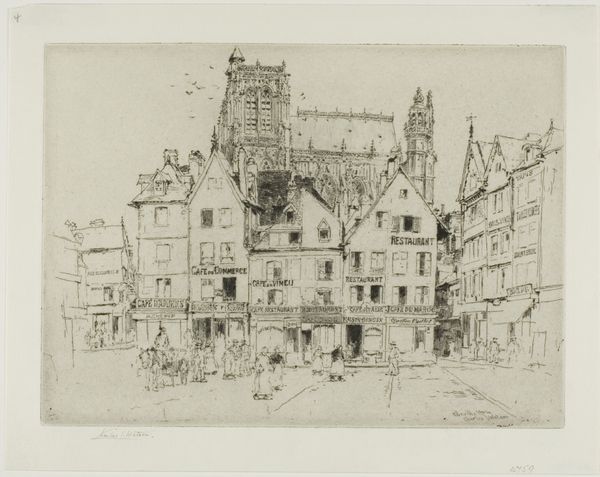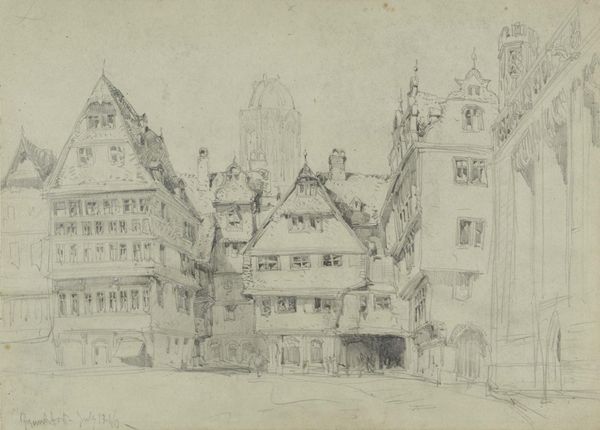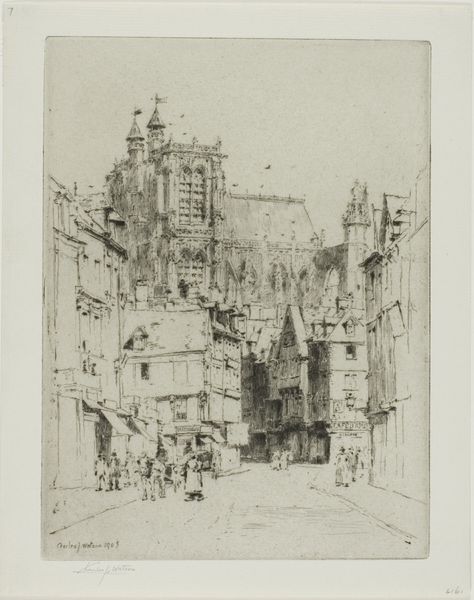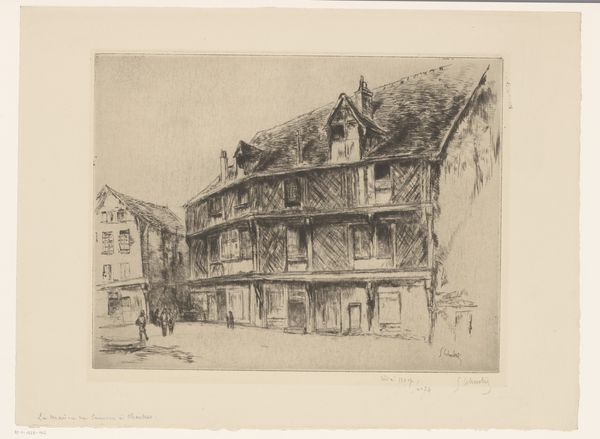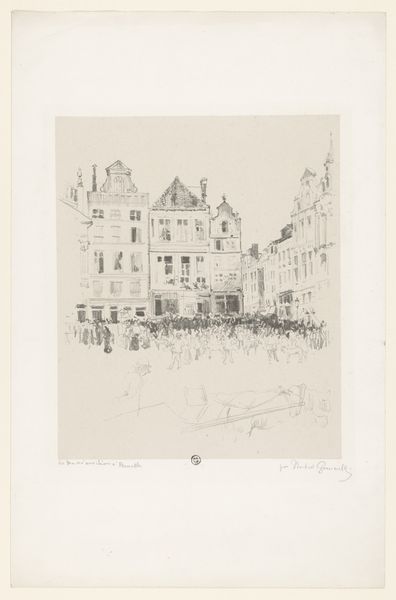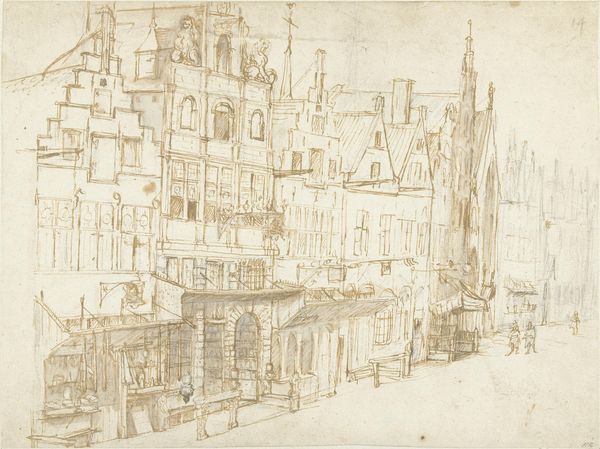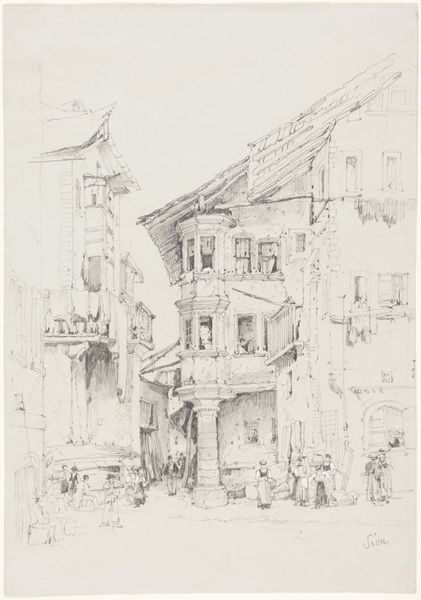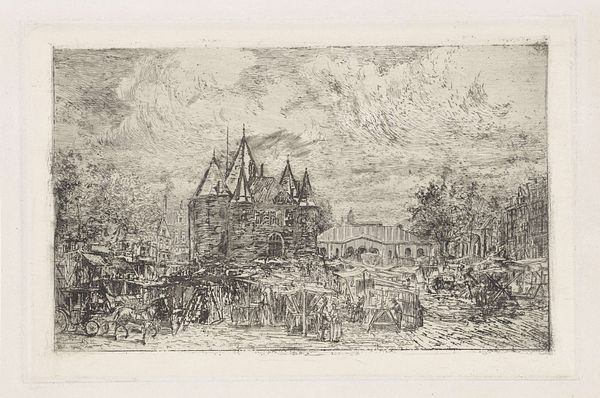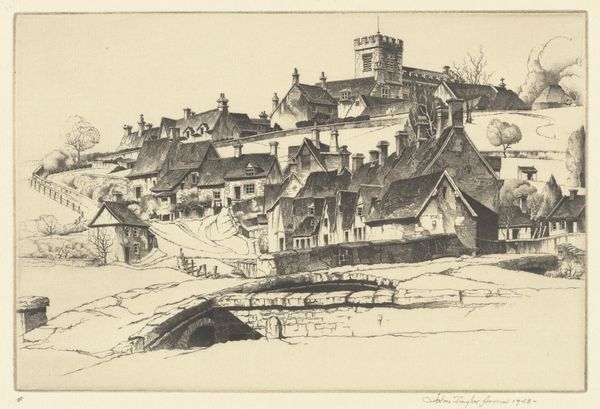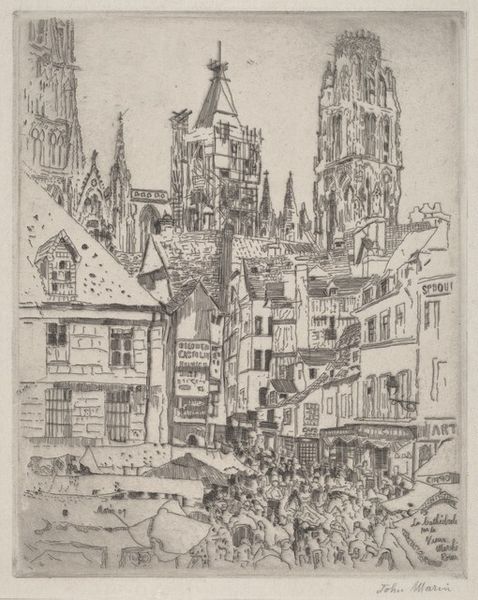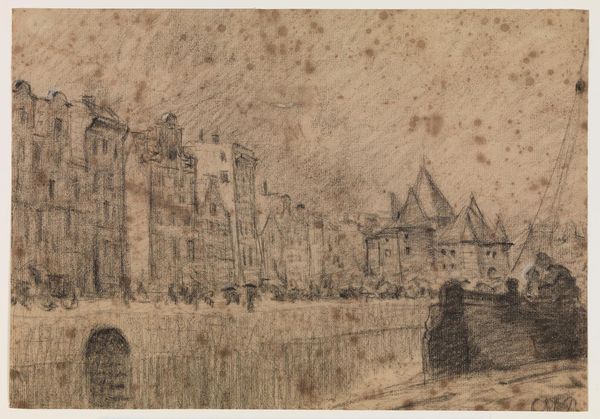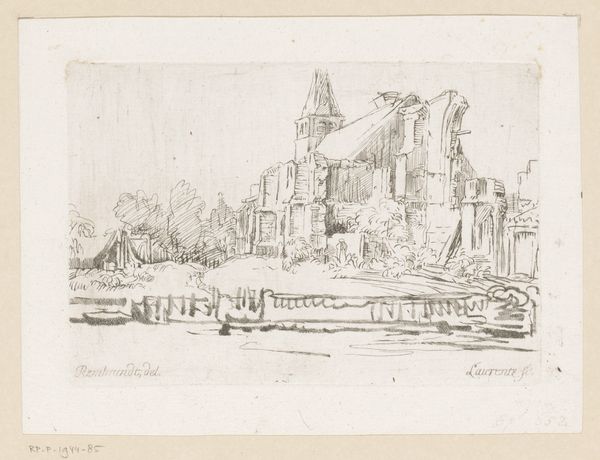
drawing, print, etching
#
drawing
#
art-nouveau
#
ink drawing
# print
#
etching
#
landscape
#
cityscape
Dimensions: plate: 20.8 x 23.7 cm (8 3/16 x 9 5/16 in.) sheet: 25.7 x 32.8 cm (10 1/8 x 12 15/16 in.)
Copyright: National Gallery of Art: CC0 1.0
Curator: John Marin's etching, "Pflanzbadgasse, Strasburg" from 1910, captures a captivating cityscape. It seems to be composed with swift, spontaneous strokes. What are your initial thoughts? Editor: There is an undeniable nostalgic feel, as if looking into the past through memory. The somewhat blurred lines convey a melancholic impression. Curator: It's remarkable how Marin, using etching—a printmaking technique relying on the corrosive properties of acid to create lines on a metal plate—manages to convey such a vivid scene with minimal means. Considering that etchings are usually produced in multiples, what impact do you believe the choice of printing has? Editor: It carries a potent image of quaint European life, laden with symbolism. We notice this recurring figure of canals and bridges. Water symbolizes change and reflections, acting almost like mirrors of memories that might be elusive. Curator: I appreciate that observation. Marin's choice of a readily reproducible medium opens questions about accessibility, consumer culture, and democratic aesthetics at the time. It prompts consideration of his audience and the marketplace for art then. Editor: Yet the picturesque Strasbourg architecture, steeped in history, provides this constant thread linking the present to bygone eras. Buildings like silent witnesses endure across the centuries. What purpose would this image of old buildings serve for Marin? Curator: Perhaps he invites us to reconsider how materials like ink and paper can become vehicles for interpreting urban landscapes, transforming commonplace scenes into potent reflections on modern existence. Marin created the scene with print. His signature in the bottom corner grounds it. Editor: Yes. Through such deliberate arrangements, one may start unraveling some emotional context embedded, as if Strasbourg has its own psyche mapped in Marin's sensitive linework here. The buildings stand for communal memory. Curator: Fascinating. This approach shows how material realities and cultural imaginaries interconnect within the making of this intriguing city view. Editor: Exactly, leading back toward pondering these symbolic resonances bridging realms inside the collective conscious. Curator: The print certainly gave us different ways to understand how meaning and context affect an artwork, as much as just its creation. Editor: True, viewing history using symbols provides unique lenses which change over time.
Comments
No comments
Be the first to comment and join the conversation on the ultimate creative platform.
